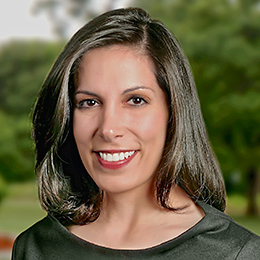By Ashley Mooney
When a chemist whisks cake batter, he’s not just thinking about the deliciousness that awaits. Whisking can actually induce chemical reactions integral to the texture of the dessert.
In a class being taught next term, Patrick Charbonneau, assistant professor of chemistry and physics, will help students apply science to creating edible masterpieces. For example, they will make two traditional Quebec desserts as an experiment in phase transitions. The ingredients in both are essentially the same, Charbonneau said, but one requires whisking while the other rests as it cools.

Students will measure the stiffness of marshmallows using chocolate bars, maybe it will end in a gooey s’more.
“By whisking you actually induce micro-crystallization and in the other one you remain in the glass phase, so the texture is completely different,” he said. “They’re going to be cooking—these are real desserts and real recipes—but the science is very controlled.”
Charbonneau works in a sub-discipline of chemistry called “soft matter,” but this doesn’t just mean marshmallows. The subject combines aspects of chemistry, physics, chemical engineering and material sciences—and fits perfectly with the science of cooking.
“The demos [in the class] are centered on food, so one of the cool ones is this material properties experiment measuring the [stiffness] of marshmallows using a chocolate bar,” Charbonneau said. “The chocolate bars are calibrated—you know their weight—and you just need a ruler to measure how much the marshmallow compresses.”
Although Charbonneau usually teaches an advanced physical chemistry course, he said he rediscovered old cuisine—and the science behind it—with the help of his friend from college and chef Justine de Valicourt, who is a visiting artist at Duke. De Valicourt has an undergraduate degree in biomedical sciences, but opted for culinary school rather than medical school. She will teach the cooking components of the seminar.
The class will meet once a week in spring semester for two and a half hours, with the first half dedicated to theory and food-centric demos, followed by cooking experiments and a dinner run by de Valicourt.
While cooking may make science more appealing to the non-scientists at Duke, Charbonneau said a basic understanding of chemistry is required in order to discuss the material in detail.
“Sure there’s the detailed chemical reaction when you’re browning something, but browning is not the entire thing,” he said. “There are some structural issues, and taste is something that is much more complicated than just a chemical that touches a receptor—there’s a texture, there’s a look.”
Since there is limited space in the kitchen—and thus limited space in the class—Charbonneau said he hopes he can make the topic more accessible to the Duke community through de Valicourt’s office hours and a final banquet.
“The students from the class will help with the cooking and serving of the banquet,” he said. “It’s the chef’s job to be able to teach them (how to cook properly) and to supervise them, so that should be fun. Hopefully we’ll be able to reach as many people as possible. We got amazing support from everybody in the administration that we talked to. I’m very grateful.”
Since bringing together a chef, a chemist and class space took a “special alignment of the planets to make it happen,” the class—which is being taught for the first time in the spring—may also be its only run.
“The chef is here for a semester, and I would never have dared—because I’m a theorist—to do a thing like this without her or the TA’s,” Charbonneau said. “I do hope though that some of the material we’ve built up will be able to be used as a special topic in general chemistry. I would like to have a module where I would be able to reuse the demonstrations and the content, and maybe even bring in a local chef at that point who would be interested. That’s one way to project it in the future.”
For those interested, the course is called Chemistry and Physics of Cooking, listed as Chem 89.
“It’s listed under chemistry, but it’s really about chemistry and physics,” Charbonneau said. “We’re looking at more physical chemistry—physics processes, denaturing of proteins. We’re also looking at the material science idea, such as viscosity, elasticity—viscoelastic moments, which chemists would never talk about… in a general chemistry class.”
















